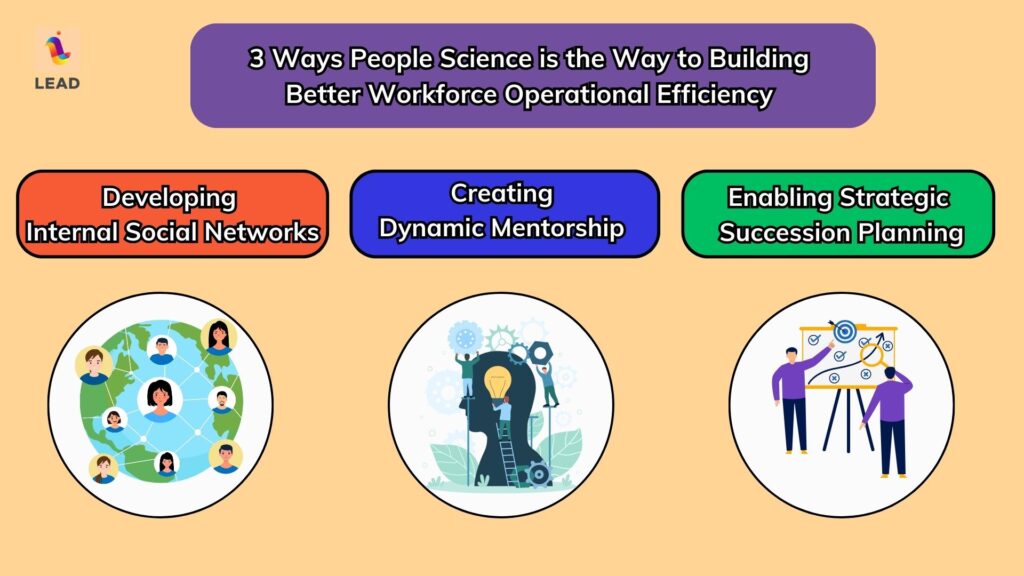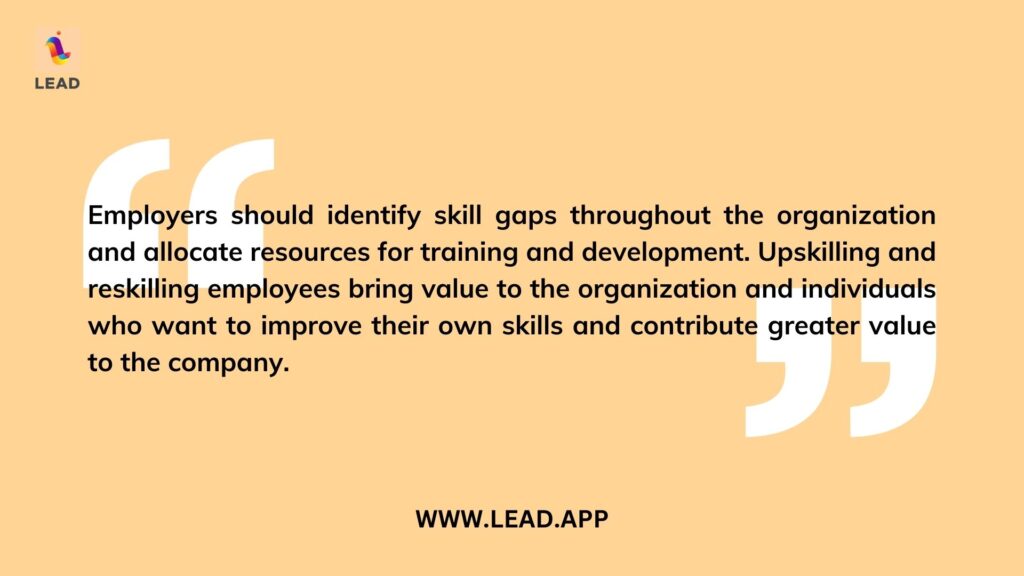The data-driven organization of today does not need to rely only on market data. Every company has a treasure trove of workforce information and valuable performance data available via people science analytics. Many C-suite executives don’t even realize that they have this cache to draw from.
To be fair, employee performance has always had HR metrics like EPI and FTE. However, their valuation process misses out on the value added by organizational culture and team collaboration. This is what people science brings into the picture and sheds light on how people actually work. It is one of the biggest breakout technologies in the business world right now. Naturally, companies that are investing in people science are discovering new groundbreaking opportunities. They are realizing that there are ways to develop business operational efficiency they did not know existed.
People science blends in the disciplines of data science and people management. It offers a fresh look at how business human resources apply to operations and how to enhance their processes. Insights derived from people science tools enable not just HR executives but also other C-suite members. This data helps in resource allocation, succession planning, fiscal planning & adjustments, performance projection, and many other factors. This is arguably the biggest missing element in business processes that cause employee burnout and employee engagement gaps. So, let’s take a deeper dive into what people science has to offer businesses for their operational efficiency and how they can use it to get more competitive in their markets:

3 Ways People Science is the Way to Building Better Workforce Operational Efficiency
Developing Internal Social Networks
Social collaboration in the workplace has become an unwritten rule for success in the world today. In fact, most Gen Z workers recognize this as a top factor for them joining a company. And the research shows that this is true. As this McKinsey insights article mentions,
At fully networked organizations—the companies seeing the greatest benefits from internal and external use of social technologies — executives report greater-than-average use of these tools in each process. They also say the technologies are more embedded in their work. These executives, like all others, report the greatest impact from using social tools in public-relations processes.
Most major companies like Microsoft, Salesforce, and Google have some form of internal social network that enables people to talk to each other. This also means that the company opens up ways for collaboration that are not just for solving a sales problem or addressing a process bottleneck. Rather, it also enables people to gain opportunities for career development in many ways.
How Does People Science Work Here?
Internal social networks operate by individual enterprises enabled by technology. When you attach people science and people analytics to that picture, it opens up a vista of employee behavior information to executives. It showcases how people interact, where they are most active, and which segments generate the most interactions. This enables them to understand how to facilitate better interactions and which technologies will enable their operational efficiency the most.
Further, managers may find the best connectors between different departments and enable employees to gain proficiency in their areas of interest. A good example will be technical professionals who can add value to sales getting technical documentation writing training with sales training to write effective sales pitch documents.
How Will Companies Benefit from all of this?
Strategic talent development is a must-have for businesses in the world today. So, identifying the talent of your workforce along with their areas of interest is a crucial aspect of workforce management. Without this element in the talent development pipeline, companies will likely have to hire externally and lose out on their internal potential. Further, companies also have the chance to understand how they will work up large-scale organizational change through people science.
A people science-driven internal social network offers a significant advantage to businesses that are looking to implement business transformation campaigns. Using people science, they can understand how to anticipate for bottlenecks and assign personnel to handle problems as they emerge. This in turn would guarantee a higher chance of transformational success.
Creating Dynamic Mentorship Opportunities
Business mentorship programs are an inherent part of every forward-moving enterprise. Almost all of the Fortune 100 companies have an active mentorship program. However, this is often not enough to get people working with their best potential. Rather, they need people who can work along with them and connect on multiple fronts. This process is usually organic but that often proves insufficient without the right organizational culture. As this Forbes article mentions,
Employers should identify skill gaps throughout the organization and allocate resources for training and development. Upskilling and reskilling employees bring value to the organization and individuals who want to improve their own skills and contribute greater value to the company.
With people science and analytics, companies discover how people connect with each other and the best possible ways of scaling them up further. They are not just going to connect with changemakers and mentorship-worthy employees, they will also enhance the collaboration value across the entire organization.
How Does People Science Work Here?
People science looks at the communication pathways that people create in an organization. These insights open up the area of dynamic people management where managers leverage resources to optimize interactions. So, for example, if sales and technical want to talk to each other for better product detailing, managers open up channels on the team collaboration software.
In addition, they explore technical documentation handling and collaboration benefits through training to enhance all future interactions. Further, they also have the chance to open up dedicated technical information processing for training new sales recruits for future benefits.
How Will Companies Benefit from all of this?
A lot of companies waste money developing mentorship programs that are not really beneficial. Their static nature and lack of collaboration value make them ill-suited for active working environments. Many times, learners find that when they are done with the mentorship, they still need to work u the skill in a live environment. This operational lag makes the learning uptake problematic because it prevents dynamic uptake.
Using people science-based collaboration and knowledge sharing, companies implement dynamic learning which operates in tandem with live processes. This helps in rapid training and integration. Plus, people get to collaborate and mentees learn from more than just their mentors. Overall, this creates a high-value proposition for businesses and enables rapid deployment of recruits as well as newly acquired skills.

3 Ways People Science is the Way to Building Better Workforce Operational Efficiency
Enabling Strategic Succession Planning
The average tenure for a CEO in the anglospheric world is about 5 years. And tenures get shorter as we go down the hierarchy. So, human resources and managers must constantly look towards developing their teams and departments. This is most actively visible in junior employees who need a lot of support early on to mature into skilled professionals. But the need for this kind of support and social structuring does not stop there.
As this Deloitte case study on succession planning mentions,
There’s a reason this is called “succession planning” and not merely “succession.” It’s a process, not a moment, and it takes years of careful decision-making to set the stage. A company’s current leadership is responsible for working to identify and prepare the next generation long before any nameplates change.
Managers also need a lot of support from their subordinates as well as superiors to work up sustainable operational efficiency. And further, they must have the infrastructure framework to hand over operational processes. For this, they need people science so they identify the best performers and most effective changemakers. This also support large operations like business transformation and overall change management processes.
How Does People Science Work Here?
For succession planning, people science offers companies significant insights in terms of operational pathways. Who talks to whom and how this helps the business develop better interworking creates strong collaboration momentum. For example, the popular statement in business consultancies is that the CEO and CFO must have a strong co-working relationship for companies to prosper. People science helps this process by creating collaboration benefits and enabling executives to foster talent for succession planning. This helps create better working environments and scaling processes for long-term talent development and operational efficiency gains.
How Will Companies Benefit from all of this?
Companies with people science and insights into workforce processes have a lot of talent development options. Along with that comes succession planning and operational efficiency development further refined through change management. As businesses evolve their people must develop the abilities needed for sustained growth. This includes dedicated business processes, working specializations, and strong in-business networks. People science helps in all of these by enabling engagement at a holistic level and forward processes on the basis of shared tendencies. Creating a strong value proposition within hierarchies offers companies talent development for long-term value acquisition.
How Should Your Business Integrate People Science to Develop Operational Efficiency in 2025?
People science helps companies develop a broader outlook towards managing their workforce talent. The future growth of businesses hinges upon creating work cultures that support individual growth. So, using people analytics and insights to create a dynamic workplace is an absolute must for businesses of all sizes. This is where LEAD bot helps in talent development, organizational culture development and succession planning.
LEAD bot is a team engagement platform for big businesses and MNCs on Slack and Teams. It is an all-in-one team development software with features like virtual coffee chats, buddy programs, birthday celebrations & work anniversary celebrations, new hire onboarding programs, and Pulse Surveys.
LEAD bot also offers cutting-edge Organizational Network Analysis (ONA) for large-scale organizations.
C-suite execs and mid-level managers benefit greatly in their decision-making from ONA and use its highly actionable insights for building strong connections across their workforce. This enables far more forward-leaning talent development and generates greater organizational interconnectedness! Foster better organizational health, talent development, employee retention, and overall performance with this simple app!
LEAD bot is a product of LEAD.app and we also LEAD.bot’s sister app Sunrize which showcases workplace attendance by graphs right on Slack! Book a demo now!







